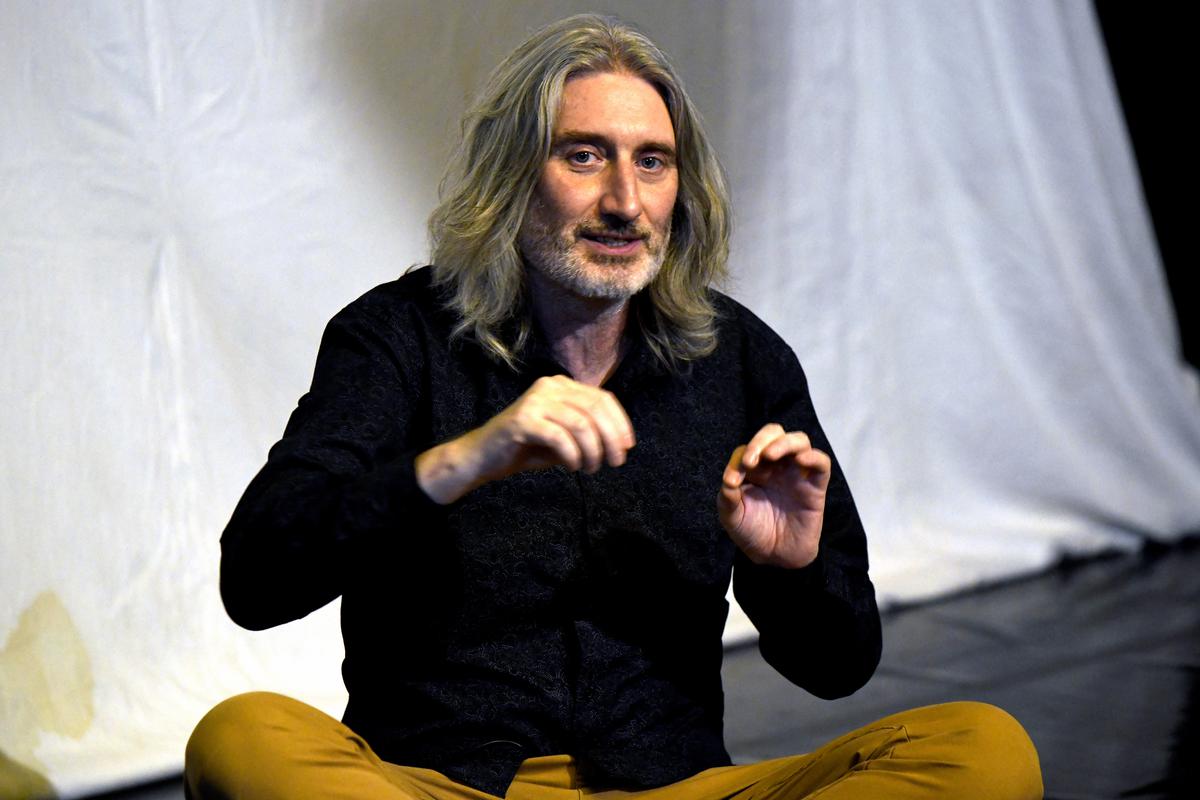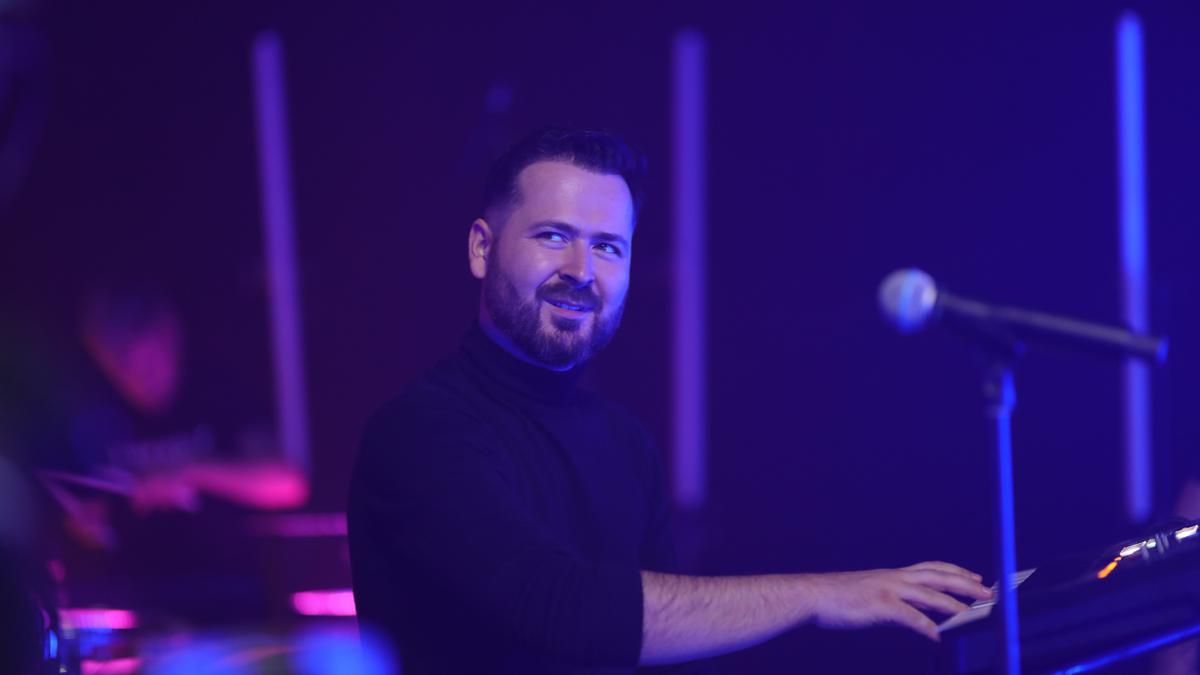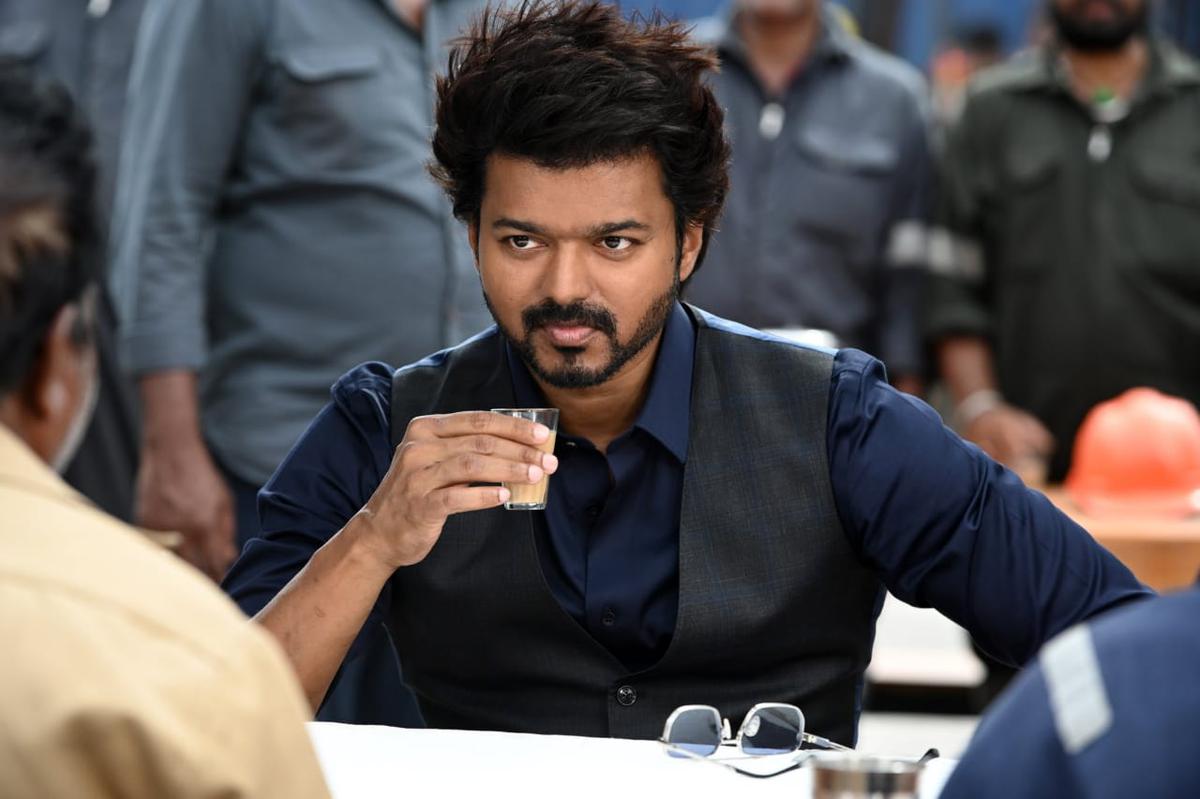Jonathan O’Hear
| Photo Credit: Special Arrangement
Attakkalari Centre for Movement Arts in partnership with the Swiss Arts Council Pro Helvetia organised a 11-day workshop (from November 16 to 26) on light design and interactive stage technologies conducted by Swiss multi-disciplinary artist Jonathan O’Hear.
Jonathan’s works have been showcased at the CCS – Paris, Musée Tinguely – Basel, Villa Bernasconi – Geneva, Fonderie Kugler – Geneva, Médiathèque de Biarritz, Fluxum – Geneva, Analix Forever – Geneva, CAC – Geneva (with Ensemble Vide), Max Mueller – Delhi (with Mandeep Raikhy), and the Science art gallery – Dublin.
His works are at the confluence of art and technology. For instance, at the end of 2017, he launched the Dai project, which involves an Artificial Intelligence robot that learns art.
The workshop at Attakkalari Centre for Movement Arts in Bengaluru, he says, was about using interactive technology in performing arts. “I wanted to share information about technology that can actually be used here. Sometimes I’ve seen other people do great workshops on technology that is available in the Western countries but are not so available here. I wanted to focus on DIY (Do It Yourself) tech, which is the core of my practice. For example, if you want to move a shadow on the stage with a trackpad, you can build that using DIY tech.”
Jonathan also answered other questions about how technology impacts art.
Excerpts:-
Q / The development of technology in cinema over the last few decades – for instance, 3D films or IMAX projection – have been strikingly visible. What have been the major technological developments when it comes to the stage?
A /
Right now, the biggest thing that’s happened is the arrival of LED lighting. A lot of people are upset about it. Because the [traditional] tungsten halogen light is a bit like the sun – it goes from a whitish light and fades into a red. There’s something very organic, something very close, that resonates with a human being. When the LEDs came, they faded one colour down and there was no change in colour. If you’re trying to use new technology in the way you were using traditional technology, then you’re always going to be at war with it. We have to figure out how we can use it.
Another thing that is slowly getting its way into theatre is interactive technology. We have sensors and cameras that can detect and capture movement on the stage and manipulate the lighting accordingly. A single camera using an AI neural network model will be able to do that. It is difficult to rent this sort of device in India. With an open-source community, however, you could actually build your own DIY device just for about $200.
Q / What does the future hold?
A /
I don’t think anybody really knows what the future holds. Technology seems to evolve exponentially. The future is going to be more about how we use the technology. For instance, Artificial Intelligence is going to play a major part in almost every aspect of life. We are at the cusp of something incredible. In another three years or so, with AI, you can generate virtual spaces and virtual realities through your own words. For example, you say, ‘I’m sitting in the kitchen’ and you can generate a kitchen. In 10 years or so, we’ll probably have an improvised theatre, where one prompts sets using 3D projection mapping techniques.
Q / We already have DALL-E, which generates digital images based on our descriptions. So, can art be made without humans?
A /
The AI model (like DALL-E) isn’t generating art, it is just generating an image. It doesn’t care. It doesn’t have a consciousness. It wouldn’t do anything if we didn’t want it to. So, humans do art. AI doesn’t want to do anything. We train these AI models using data sets of images. Instead of worrying about if AI can replace or steal our creativity, we need to be more concerned with how it is replacing people in workplaces.
Q / Virtual Reality is steadily growing as well. When it is fully unleashed, would it make live performances like theatre obsolete?
A /
When the camera arrived, people said, ‘It’s the end of painting and portraiture art because cameras can now take pictures.’ But painting and portraiture evolved into art forms. When cinema came, people thought it was the end of theatre. But it wasn’t. When virtual Metaverses come, we’re afraid that shows are going to be in that space and that we won’t need humans anymore. I’m guessing you know, theatre is going to survive all of this. Technology can actually bring back some of the lost art forms. Storytelling, for instance. Imagine – with virtual reality, you can tell a story which will simultaneously materialise around the people.





